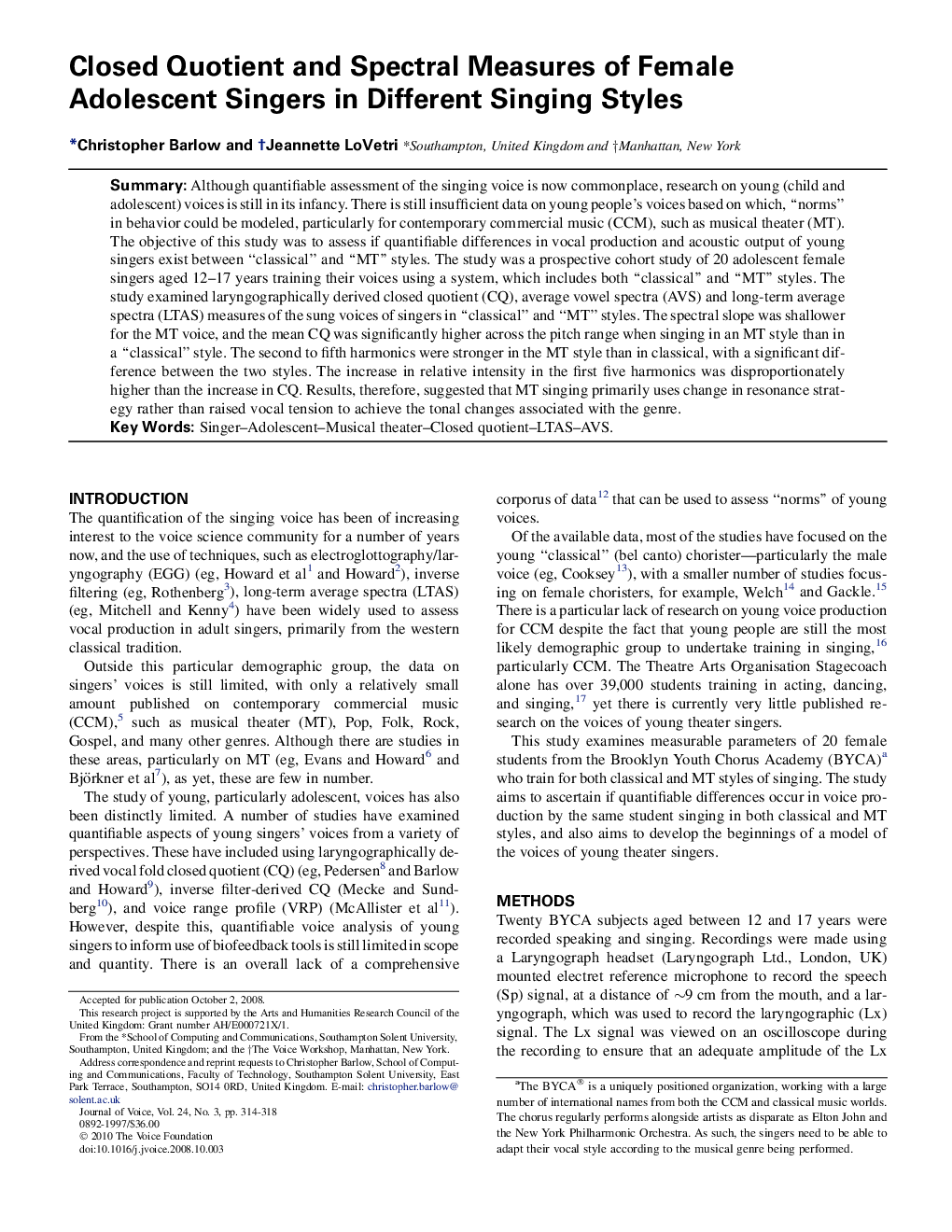| Article ID | Journal | Published Year | Pages | File Type |
|---|---|---|---|---|
| 1102300 | Journal of Voice | 2010 | 5 Pages |
SummaryAlthough quantifiable assessment of the singing voice is now commonplace, research on young (child and adolescent) voices is still in its infancy. There is still insufficient data on young people's voices based on which, “norms” in behavior could be modeled, particularly for contemporary commercial music (CCM), such as musical theater (MT). The objective of this study was to assess if quantifiable differences in vocal production and acoustic output of young singers exist between “classical” and “MT” styles. The study was a prospective cohort study of 20 adolescent female singers aged 12–17 years training their voices using a system, which includes both “classical” and “MT” styles. The study examined laryngographically derived closed quotient (CQ), average vowel spectra (AVS) and long-term average spectra (LTAS) measures of the sung voices of singers in “classical” and “MT” styles. The spectral slope was shallower for the MT voice, and the mean CQ was significantly higher across the pitch range when singing in an MT style than in a “classical” style. The second to fifth harmonics were stronger in the MT style than in classical, with a significant difference between the two styles. The increase in relative intensity in the first five harmonics was disproportionately higher than the increase in CQ. Results, therefore, suggested that MT singing primarily uses change in resonance strategy rather than raised vocal tension to achieve the tonal changes associated with the genre.
